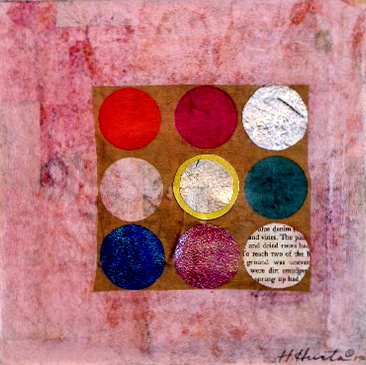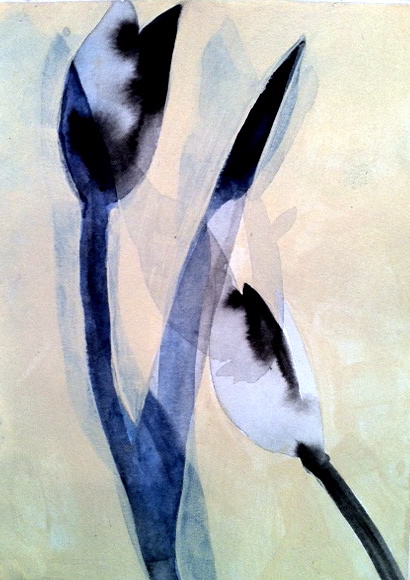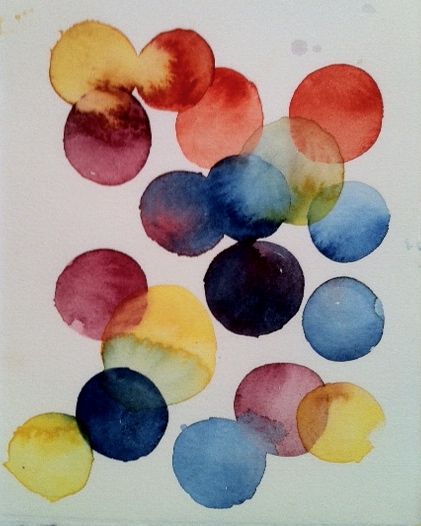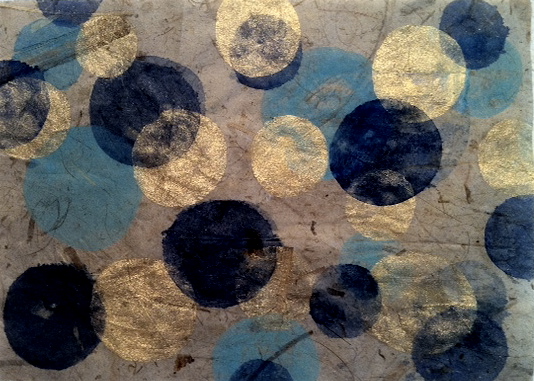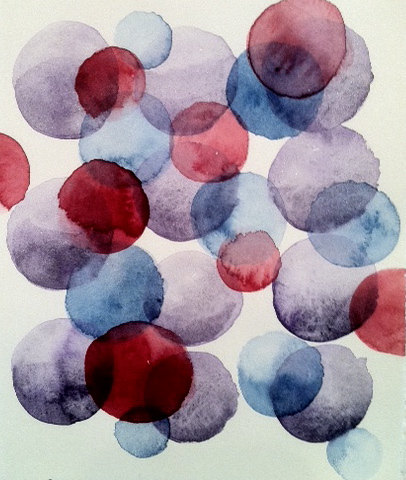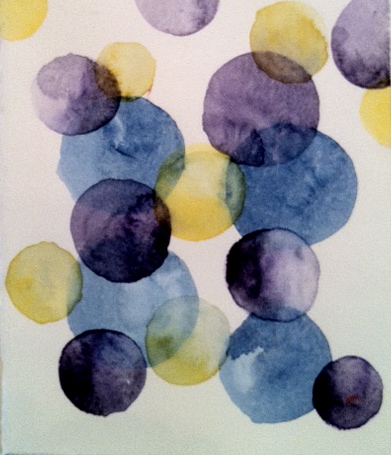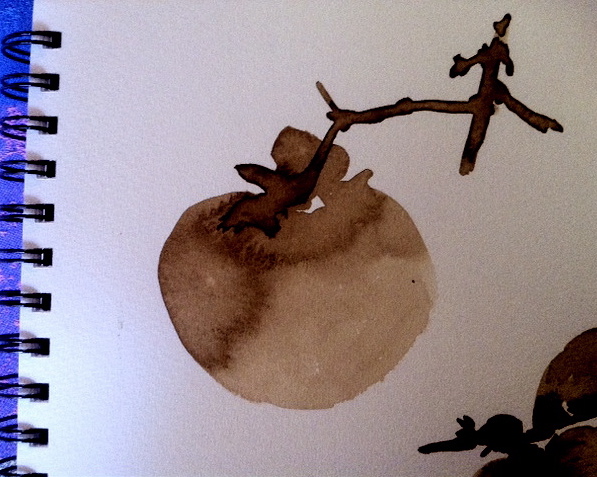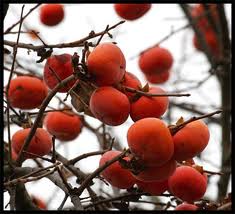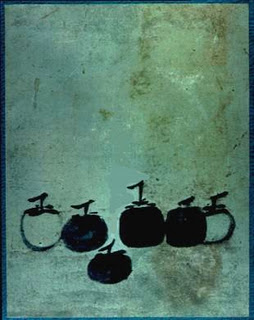I've been practicing watercolor for 7 months now, with my teacher, Stacey Vetter. As is my wont, I thought that I'd be seeing certain kinds of results earlier. It doesn't really matter what I'm doing, exercising, studying, making art--I always want things to happen overnight. In this case, I wanted to see how the watercolor painting would transfer over to my collage work.
Luckily, I did notice results with the watercolor, at least enough to keep me going and, just when I'd forgotten about what it was I wanted to happen, it began to do so. I am just beginning to understand how crucial a light touch is.
Previously in my art, I've worked hard to create a series of layers whether it is in fabric, collage, paint or even pencil. I want to show the history of marks, to leave tracks that hint at the evolution of the piece.
Now, as I begin to believe in the power of the light touch, I find myself applying the same process with collage. This morning after adding a layer of gel to a panel, I stood back, gazed at it and stripped away layers that had been softened by the gel. There was a moment that I caught a reflection of the piece's bones and I liked them.
It makes me think of Reiki, that hands on healing technique that we use in the hospital to help with pain and anxiety.
As I hold my hands in different positions on a person's body, I find myself thinking "What I am doing? Is this crazy?" And invariably after I say that to myself, I see the child relaxing, going to sleep, the room quiets and even the parents in the room settle down. One of the patients I worked on described the effects as "smoothing out the wrinkles of pain."--As if while the pain subsides, ripples of relaxation take over.
I can't help but notice the correlation between Reiki and watercolor. Watercolor too is a smoothing and rippling-the sound and feel of the paint going onto the paper, the shush shush as the brush slides over the soft, stippled paper, brushing on color. And there's something else about the relationship between Reiki and art; both require a light touch. The less you work at it, the better it is.

